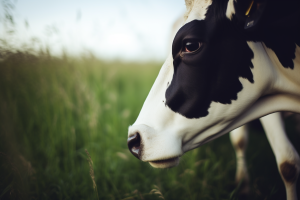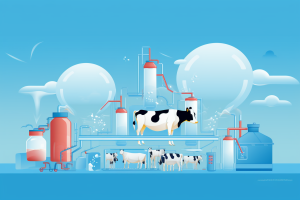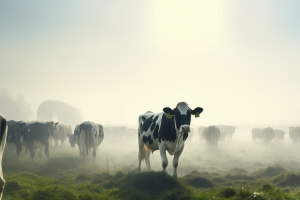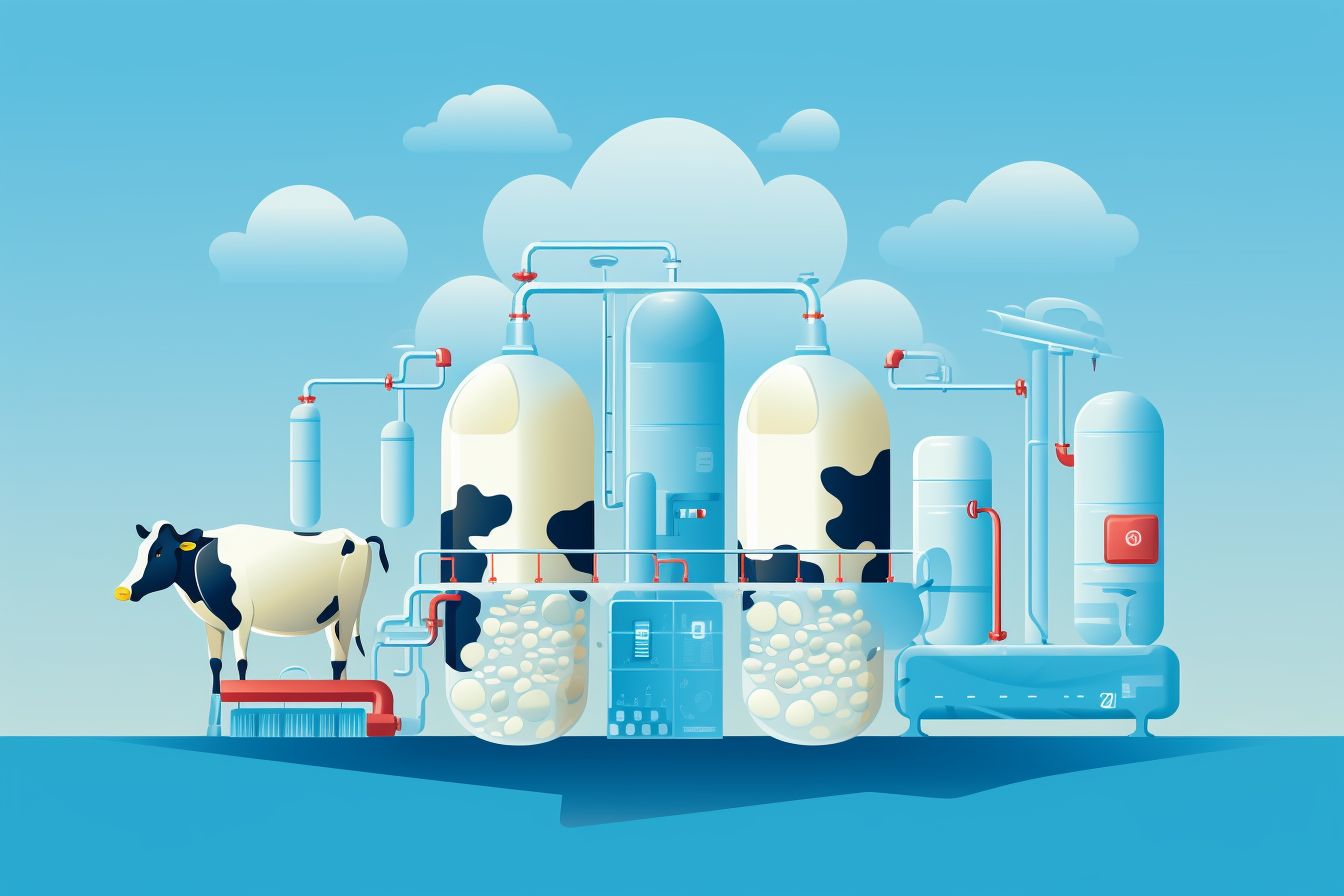
The US dairy industry consolidation over the past two decades has left a profound impact on family-scale farms, the environment, and the economy.
The US dairy industry consolidation over the past two decades has left a profound impact on family-scale farms, the environment, and the economy. This in-depth analysis unravels the complex dynamics of the industry, revealing a concerning trend of ‘get big or get out’ that has been driven by misguided policies and market forces. The average American dairy turned a profit only twice in the past two decades despite milk production rising by almost 40%, according to analysis by Food and Water Watch (FWW).
The Unsettling Reality of US Dairy Industry Consolidation
The US dairy industry has undergone a significant transformation over the past two decades, with a clear trend towards consolidation. This shift has been largely driven by policies aimed at boosting milk production and expanding export markets. However, this approach has had detrimental effects on family-scale farms and the environment, while benefiting agribusinesses and corporate lobbyists. In the past 20 years, US dairy exports rose eightfold – more than almost any other commodity – which has coincided with rapid consolidation across the industry.
The Economic and Environmental Cost of Dairy Monopolies

This shift has been largely driven by policies aimed at boosting milk production and expanding export markets.
The consolidation in the US dairy industry has occurred at a faster pace than in every other agricultural sector apart from hog and egg production. This consolidation is happening at both the farm level – fewer farms, more mega-dairies — and at the processing level — fewer but larger corporations and cooperatives that purchase, process, and market dairy products. Nationally, the total number of US dairy farms fell by more than half between 1997 and 2017, while the average number of cows per farm increased by 139%, according to analysis of USDA data. More than 70% of US milk is produced on farms with at least 500 cows, with the largest dairies boasting herds of more than 25,000.
Enjoying our insights?
Subscribe to our newsletter to keep up with the latest industry trends and developments.
Stay Informed“The economic cost of dairy consolidation is a story filled with the incredibly orchestrated and devastating farmer loss and hardship, and a worsening environmental outlook. But it wasn’t always this way, and it doesn’t have to be this way. We have to reject false solutions and instead reform policies to support farmers, the environment, and the U.S. economy.”
The Role of Policy Shift in Dairy Farm Consolidation
In the past 20 years, spiraling debt and bankruptcies have been linked to farmer suicides and the decline in rural populations. “We cannot export or consume our way out of this problem, we need policies to better manage supplies to reflect actual demand so that dairy farming can go back to being a viable livelihood,” said Sarah Lloyd, a dairy farmer in Wisconsin who helps run the family’s midsize farm with 450 cows.

The economic cost of dairy consolidation is a story filled with the incredibly orchestrated and devastating farmer loss and hardship, and a worsening environmental outlook.
Farmers have struggled to break even due to production costs rising faster than milk prices – which were slightly lower in 2021 compared with 2000. This is partly due to a major shift in US dairy policy away from price stabilization achieved through minimum price guarantees and buying and storing excess milk that would be donated or resold to manage oversupply, to one that encourages production and expanding export markets.
The Influence of Corporate Schemes on Dairy Farmers
But dairy farmers are forced to pay into corporate schemes that work against their interests. FWW estimates that between 2005 and 2018 dairy farmers paid around $4bn into the mandatory Dairy Checkoff program which funds campaigns pushing US milk, butter, and creamers to consumers and fast-food firms that mostly benefit mega-dairies. At the state level, at least $75m in New York taxpayer dollars has flowed to a handful of corporate and cooperative entities in the last 20 years, with the promise of a few thousand jobs – some of which were quickly lost when dairy plants closed.
The Urgent Need for Dairy Policy Reform
The urgent need for dairy policy reform is clear. The current state and federal dairy policies are driving family-scale farms to extinction while fueling the climate crisis. It’s time to reject false solutions and instead reform policies to support farmers, the environment, and the U.S. economy.
The Environmental Implications of Dairy Industry Consolidation

The urgent need for dairy policy reform is clear. The current state and federal dairy policies are driving family-scale farms to extinction while fueling the climate crisis.
The environmental implications of the US dairy industry consolidation are equally concerning. Despite the number of cows remaining stable, methane emissions from dairy manure have more than doubled since 1990. This increase is largely due to theway factory farms manage waste, with larger farms less likely to graze their cattle and more likely to store manure in liquid form, which encourages the release of methane. The dairy industry is responsible for 2% of total US greenhouse gas emissions, according to the EPA.
In recent years, as scientists have warned about the oversized role played by industrial farming in global heating, agribusinesses including dairy have looked towards unproven industry-led fixes like carbon offset markets and feed additives to lower the methane content in cow burps, rather than addressing the main problem, which is factory farming large herds.
In conclusion, the US dairy industry consolidation has had profound economic and environmental impacts. It’s time to take a hard look at the policies and market forces driving this trend and work towards a more sustainable and equitable future for the dairy industry. This will require a fundamental shift in policy, away from the current focus on boosting production and exports, towards a model that supports family-scale farms, protects the environment, and ensures a fair return for farmers.
Key Takeaways:
- The US dairy industry has undergone significant consolidation over the past two decades, largely driven by policies aimed at boosting milk production and expanding export markets. This has coincided with rapid consolidation across the industry, with more than 70% of US milk produced on farms with at least 500 cows.
- This consolidation has had detrimental effects on family-scale farms and the environment, while benefiting agribusinesses and corporate lobbyists. Farmers have struggled to break even due to production costs rising faster than milk prices.
- The economic cost of dairy consolidation has led to farmer loss and hardship, and a worsening environmental outlook. Dairy farmers paid around $4bn into the mandatory Dairy Checkoff program which mostly benefits mega-dairies.
- Dairy farmers are forced to pay into corporate schemes that work against their interests, such as the mandatory Dairy Checkoff program. At the state level, at least $75m in New York taxpayer dollars has flowed to a handful of corporate and cooperative entities in the last 20 years.
- The urgent need for dairy policy reform is clear, as current policies are driving family-scale farms to extinction while fueling the climate crisis.
- The environmental implications of dairy industry consolidation are concerning, with methane emissions from dairy manure more than doubling since 1990 due to the way factory farms manage waste. The dairy industry is responsible for 2% of total US greenhouse gas emissions.
- It’s time to reject false solutions and reform policies to support farmers, the environment, and the U.S. economy.
Explore More on Related Topics
- For more insights into the challenges facing the dairy industry, explore this page.
- To understand more about the role of agribusinesses in the industry, follow this link.
- To stay updated on the latest trends in farms and farming, check out this link.
- For more on the impact of federal policies on the industry, visit this link.
Explore External Resources and Insights
- USDA: Learn more about their mission, history, and the areas they cover.
- Food and Water Watch: Find information on their services, history, and commitment to innovation.
- US Dairy Export Council: Understand the regulations and laws in the specific field.
- MegaMilk: Charting Consolidation in the U.S. Dairy Industry – Visual Capitalist
US dairy policies drive small farms to ‘get big or get out’ as monopolies get rich – The Guardian
Consolidation in U.S. Dairy Farming – USDA ERS
A closer look at consolidation in the US – Dairy Global
US dairy consolidation likely to continue down the road – Farm and Dairy




















